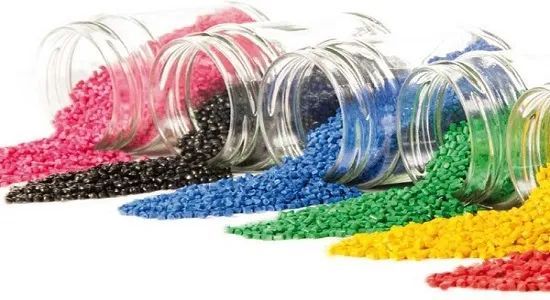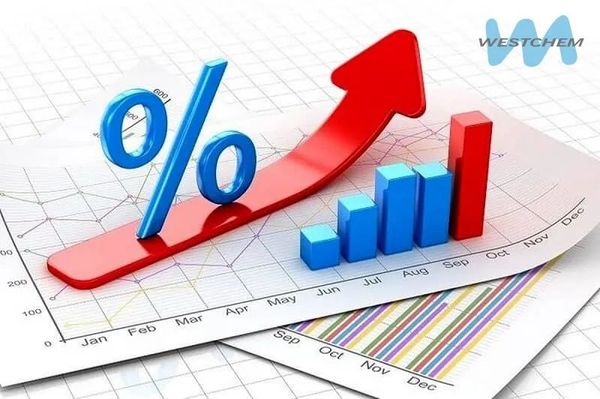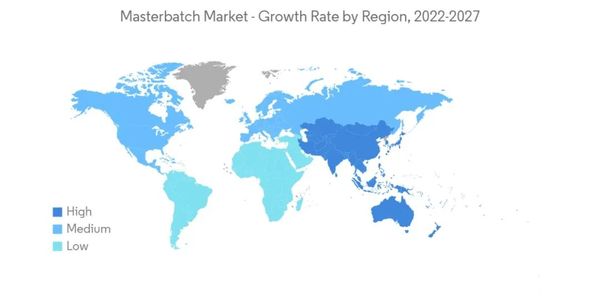Trade uncertainties and cost pressures drive up US masterbatch prices
Recently, the price of color masterbatches in the US market has continued to rise, driven by multiple factors such as the recovery of consumer demand, increased production costs, and trade uncertainties. According to analysis by professional institutions, this trend is expected to continue over the next few months, with market volatility being exacerbated by fluctuations in crude oil prices, geopolitical risks, and supply chain challenges.
As an important raw material for the automotive, plastics, and rubber industries, the price trend of color masterbatches not only reflects the dynamics of the raw materials market but also mirrors the complex impacts of the global economic and policy environment.
The primary reason for the increase in the price of color masterbatches is the rise in production costs. At the end of February, there was a slight rebound in US crude oil prices, with commercial crude oil inventories decreasing by 2.3 million barrels, and gasoline and distillate fuel inventories also declining, indicating a tightening domestic supply situation.

Crude oil, as a key raw material in the upstream of the masterbatch production chain, has seen its price fluctuations directly push up downstream costs. Additionally, the price of carbon black, an important component of masterbatches, is also steadily rising, driven by increased costs of raw materials such as oil and natural gas. Geopolitical factors have further exacerbated this pressure, especially tensions involving Russia, which may lead to supply disruption risks, injecting extra risk premiums into the market.
The automotive industry, as the main consumer sector for masterbatches, plays a crucial role in the growth of market demand. In February 2025, new car sales in the US are expected to reach 1.23 million units, an improvement from January, reflecting a volatile recovery in consumer demand.
The increased demand for rubber components (such as tires) in automobile production has directly boosted the usage of carbon black and masterbatches. However, whether this growth momentum can be sustained remains uncertain. Increased dealer inventory, intensified competition, and expanded manufacturer discounts have led to a decline in total profit per unit for retailers compared to February 2024.

At the same time, the uncertainty of trade policies casts a shadow over the market. US President Donald Trump's proposal to impose a 25% tariff on cars and auto parts from Canada and Mexico could disrupt the North American auto supply chain.
Meanwhile, the uncertainty of trade policies casts a shadow over the market. U.S. President Donald Trump has proposed a 25% tariff on automobiles and auto parts from Canada and Mexico, which could disrupt the North American automotive supply chain.This policy, if implemented, would impact $300 billion in annual U.S. auto trade and indirectly affect the demand for color masterbatches. The U.S. color masterbatch market, which is highly dependent on international suppliers, is extremely vulnerable to fluctuations in global trade policies. The threat of tariffs could further drive up costs and suppress downstream demand.
This policy, if implemented, would impact $300 billion in annual U.S. auto trade and indirectly affect the demand for color masterbatches. The U.S. color masterbatch market, which is highly dependent on international suppliers, is extremely vulnerable to fluctuations in global trade policies. The threat of tariffs could further drive up costs and suppress downstream demand.Logistical challenges are also adding complexity to the color masterbatch market. At the Port of Los Angeles, container loading delays have exceeded two weeks due to a shortage of rail cars and a surge in freight volumes. Additionally, the full impact of recent wildfires in the Los Angeles area remains unclear, but they have already added uncertainty to the supply chain. These logistical bottlenecks not only delay the delivery of raw materials and finished products but also indirectly increase operating costs for businesses, further supporting the upward trend in color masterbatch prices.
Logistical challenges are also adding complexity to the color masterbatch market. At the Port of Los Angeles, container loading delays have exceeded two weeks due to a shortage of rail cars and a surge in freight volumes. Additionally, the full impact of recent wildfires in the Los Angeles area remains unclear, but they have already added uncertainty to the supply chain. These logistical bottlenecks not only delay the delivery of raw materials and finished products but also indirectly increase operating costs for businesses, further supporting the upward trend in color masterbatch prices.

In the coming months, the U.S. color masterbatch market will move forward amidst opportunities and challenges. On one hand, growth in auto sales and improved consumer demand will provide support to the market, with the demand for high-performance color masterbatches potentially driving price increases. On the other hand, rising raw material costs, potential import tariffs, and logistical disruptions will keep prices high and increase volatility.
Over the next few months, the U.S. masterbatch market will move forward amidst opportunities and challenges. On one hand, the growth in car sales and the improvement in consumer demand provide support to the market, especially the demand for high-performance masterbatches may continue to drive up prices. On the other hand, rising raw material costs, potential import tariffs, and logistics disruptions are unfavorable factors that will keep prices at a high level and increase volatility.The continuous rise in the price of key raw materials such as carbon black may force masterbatch producers to pass on costs, but downstream acceptance still needs to be observed. If Trump's tariff policy is implemented, the production costs of the North American automotive industry will further increase, potentially weakening the momentum of demand growth for masterbatches. In addition, global economic uncertainties, such as energy market fluctuations caused by geopolitical risks in Russia, will also bring additional upward pressure on masterbatch prices.
The continuous rise in the price of key raw materials such as carbon black may force masterbatch producers to pass on costs, but downstream acceptance still needs to be observed. If Trump's tariff policy is implemented, the production costs of the North American automotive industry will further increase, potentially weakening the momentum of demand growth for masterbatches. In addition, global economic uncertainties, such as energy market fluctuations caused by geopolitical risks in Russia, will also bring additional upward pressure on masterbatch prices.

The current price increases in the U.S. masterbatch market are the result of the combined effects of production costs, trade policies, and supply chain challenges. The rebound in crude oil prices and the rise in carbon black costs have set the foundation for price hikes, with automotive industry demand injecting vitality into the market, while trade uncertainties and logistical bottlenecks add variables to the outlook. ChemAnalyst predicts that the market will continue to fluctuate over the next few months, with prices possibly remaining at a high level.
Source: Global Chemistry
Source: Global Chemistry
【Copyright and Disclaimer】The above information is collected and organized by PlastMatch. The copyright belongs to the original author. This article is reprinted for the purpose of providing more information, and it does not imply that PlastMatch endorses the views expressed in the article or guarantees its accuracy. If there are any errors in the source attribution or if your legitimate rights have been infringed, please contact us, and we will promptly correct or remove the content. If other media, websites, or individuals use the aforementioned content, they must clearly indicate the original source and origin of the work and assume legal responsibility on their own.
Most Popular
-

List Released! Mexico Announces 50% Tariff On 1,371 China Product Categories
-

Nissan Cuts Production of New Leaf EV in Half Due to Battery Shortage
-

New Breakthrough in Domestic Adiponitrile! Observing the Rise of China's Nylon Industry Chain from Tianchen Qixiang's Production
-

Dow, Wanhua, Huntsman Intensively Raise Prices! Who Controls the Global MDI Prices?
-

Mexico officially imposes tariffs on 1,400 chinese products, with rates up to 50%






